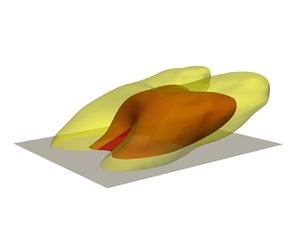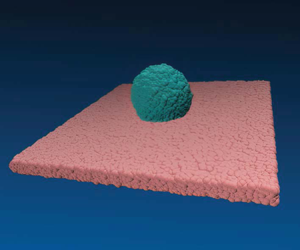Refine listing
Actions for selected content:
1417120 results in Open Access
The melanin pigment gene black mediates body pigmentation and courtship behaviour in the German cockroach Blattella germanica
-
- Journal:
- Bulletin of Entomological Research / Volume 114 / Issue 2 / April 2024
- Published online by Cambridge University Press:
- 16 April 2024, pp. 271-280
-
- Article
- Export citation
Linear actions of $\mathbb {Z}/p\times \mathbb {Z}/p$
 on $S^{2n-1}\times S^{2n-1}$
on $S^{2n-1}\times S^{2n-1}$
- Part of
-
- Journal:
- Proceedings of the Royal Society of Edinburgh. Section A: Mathematics / Volume 154 / Issue 6 / December 2024
- Published online by Cambridge University Press:
- 16 April 2024, pp. 1699-1712
- Print publication:
- December 2024
-
- Article
- Export citation
The structure of turbulence in unsteady flow over urban canopies
-
- Journal:
- Journal of Fluid Mechanics / Volume 985 / 25 April 2024
- Published online by Cambridge University Press:
- 16 April 2024, A5
-
- Article
-
- You have access
- Open access
- HTML
- Export citation
Lusaka Call-to-Action 2022: A Call to Strengthen Public Health Emergency Operation Centers in Africa
-
- Journal:
- Disaster Medicine and Public Health Preparedness / Volume 18 / 2024
- Published online by Cambridge University Press:
- 16 April 2024, e72
-
- Article
-
- You have access
- Open access
- HTML
- Export citation
Polarization and the Democratic System: Kinds, Reasons, and Sites
-
- Journal:
- Perspectives on Politics / Volume 23 / Issue 1 / March 2025
- Published online by Cambridge University Press:
- 16 April 2024, pp. 76-92
- Print publication:
- March 2025
-
- Article
- Export citation
MICHAEL D. REEVE, THE TRANSMISSION OF PLINY'S NATURAL HISTORY (Sussidi eruditi 101). Rome: Edizioni di Storia e Letteratura, 2021. Pp. xiii + 409. isbn 9788893595582. €65.00.
-
- Journal:
- The Journal of Roman Studies / Volume 114 / November 2024
- Published online by Cambridge University Press:
- 16 April 2024, pp. 185-186
- Print publication:
- November 2024
-
- Article
- Export citation
Foreign Workers in Czechoslovakia in 1945–1950
-
- Journal:
- Austrian History Yearbook / Volume 55 / May 2024
- Published online by Cambridge University Press:
- 16 April 2024, pp. 387-401
- Print publication:
- May 2024
-
- Article
-
- You have access
- Open access
- HTML
- Export citation
Characterization of partial wetting by CMAS droplets using multiphase many-body dissipative particle dynamics and data-driven discovery based on PINNs
-
- Journal:
- Journal of Fluid Mechanics / Volume 985 / 25 April 2024
- Published online by Cambridge University Press:
- 16 April 2024, A7
-
- Article
-
- You have access
- Open access
- HTML
- Export citation
Ultrasonography-guided drainage versus surgical drainage for deep neck space abscesses: a systematic review and meta-analysis
-
- Journal:
- The Journal of Laryngology & Otology / Volume 138 / Issue 9 / September 2024
- Published online by Cambridge University Press:
- 15 April 2024, pp. 906-912
- Print publication:
- September 2024
-
- Article
-
- You have access
- Open access
- HTML
- Export citation
Isochronous centers and flat Finsler metrics (I)
- Part of
-
- Journal:
- Canadian Journal of Mathematics / Volume 77 / Issue 4 / August 2025
- Published online by Cambridge University Press:
- 15 April 2024, pp. 1294-1314
- Print publication:
- August 2025
-
- Article
- Export citation
The Queen's Urdu: Translating Colonial Secularity in Victoria's 1858 Proclamation
-
- Journal:
- Victorian Literature and Culture / Volume 52 / Issue 1 / Spring 2024
- Published online by Cambridge University Press:
- 15 April 2024, pp. 104-127
-
- Article
-
- You have access
- Open access
- HTML
- Export citation
Collective Self-Defence in International Law by James A. GREEN. Cambridge, United Kingdom: Cambridge University Press, 2024. xx + 366 pp. Hardback: USD$135.00. doi: 10.1017/9781009406420
-
- Journal:
- Asian Journal of International Law / Volume 14 / Issue 2 / July 2024
- Published online by Cambridge University Press:
- 15 April 2024, pp. 429-430
- Print publication:
- July 2024
-
- Article
- Export citation
COUPLED FREE FERMION CONFORMAL FIELD THEORY AND REPRESENTATIONS
- Part of
-
- Journal:
- Bulletin of the Australian Mathematical Society / Volume 110 / Issue 1 / August 2024
- Published online by Cambridge University Press:
- 15 April 2024, p. 170
- Print publication:
- August 2024
-
- Article
-
- You have access
- HTML
- Export citation
The fiscal transformation of the Spanish Carrera de Indias in the 17th century: a reinterpretation
-
- Journal:
- Revista de Historia Economica - Journal of Iberian and Latin American Economic History / Volume 42 / Issue 2 / September 2024
- Published online by Cambridge University Press:
- 15 April 2024, pp. 171-192
- Print publication:
- September 2024
-
- Article
-
- You have access
- Open access
- HTML
- Export citation
Tracy C. Davis. Liberal Lives and Activist Repertoires: Political Performance and Victorian Social Reform Cambridge: Cambridge University Press, 2023. Pp. 352. $39.99 (cloth).
-
- Journal:
- Journal of British Studies / Volume 63 / Issue 2 / April 2024
- Published online by Cambridge University Press:
- 15 April 2024, pp. 490-491
-
- Article
- Export citation
AST volume 22 issue 1 Cover and Front matter
-
- Journal:
- Journal of Anglican Studies / Volume 22 / Issue 1 / May 2024
- Published online by Cambridge University Press:
- 15 April 2024, pp. f1-f6
-
- Article
-
- You have access
- Export citation
Largest exact structures and almost split sequences on hearts of twin cotorsion pairs
- Part of
-
- Journal:
- Canadian Journal of Mathematics / Volume 77 / Issue 4 / August 2025
- Published online by Cambridge University Press:
- 15 April 2024, pp. 1347-1376
- Print publication:
- August 2025
-
- Article
- Export citation
A Spark in the Smokestacks: Environmental Organizing in Beijing Middle-Class Communities Jean Yen-chun Lin. New York: Columbia University Press, 2023. 344 pp. $35.00; £30.00 (pbk). ISBN 9780231194518
-
- Journal:
- The China Quarterly / Volume 258 / June 2024
- Published online by Cambridge University Press:
- 15 April 2024, pp. 581-583
- Print publication:
- June 2024
-
- Article
- Export citation
Epilogue: The Postscripts of Vernacular Victoria
-
- Journal:
- Victorian Literature and Culture / Volume 52 / Issue 1 / Spring 2024
- Published online by Cambridge University Press:
- 15 April 2024, pp. 247-265
-
- Article
-
- You have access
- Open access
- HTML
- Export citation












